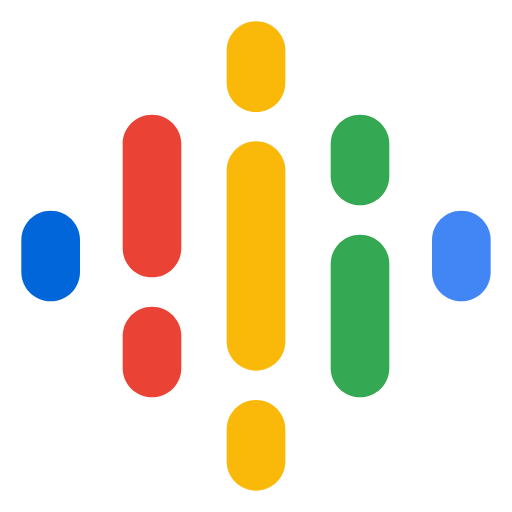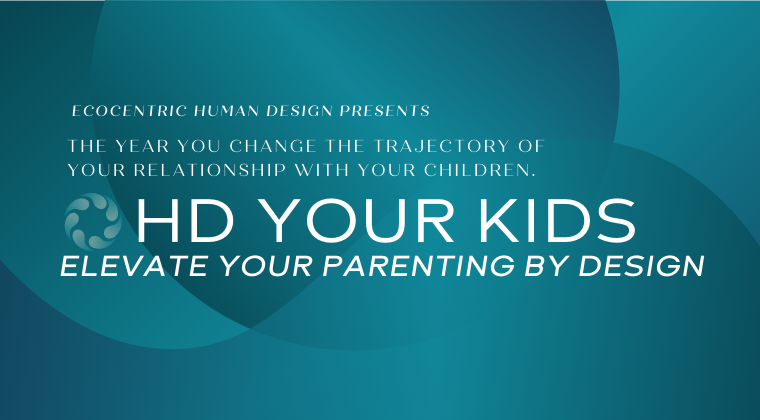Navigating the Emotional Wave in the Defined Solar Plexus in Human Design
In this episode of the HD Your Biz podcast, host Jamie Palmer discusses the concept of the emotional wave in human design. She explains that nearly 50% of the population has a defined solar plexus, which operates on an emotional wave, meaning clarity comes over time and decisions are never 100% certain. There are three types of emotional waves: the tribal wave, the individual wave, and the collective wave. Each wave has its own characteristics and ways of operating. Palmer emphasizes the importance of not resisting these waves, but rather allowing them to pass and not identifying with the emotions they bring. She also discusses the concept of emotional neutrality and how it can be achieved.
00:00 Emotional waves vary based on human design.
04:54 Physical touch can dispel tribal wave. Energy sensitive to others’ needs.
09:03 Emotional energy creates waves of destruction. Surrender.
11:40 Live in the moment, embrace new cycles.
16:19 Naming and understanding emotions helps kids cope.
20:41 Understanding and navigating emotional waves effectively.
21:59 Sample experience inside HD Wild program, teaching.
Emotional Solar Plexus in Human Design & Navigtaing the Emotional Wave Transcription
(00:02):
Hello and welcome to the HD Your Biz podcast. I’m your host, Jamie Palmer, and today we are talking about the emotional wave. Okay? So nearly 50% of the population at any given time is going to have a defined solar plexus. And if you’re lucky to be born in the past year or two, you more than likely will have a defined solar plexus. We’ll probably actually see that number statistically speaking go up simply because there’s so many outer transits that are in the solar plexus. I digress. Anyway, we have to understand that the defined solar plexus operates on an emotional wave. This means that there is no knowing in the now. Clarity comes over time. And for me, when I learned this in human design, this was one of the first pieces that I found out about in human design. This was the piece that I couldn’t unsee when human design found me on Instagram and having emotional authority, having a defined solar plexus means that you’re never going to have 100% certainty that any decision that you are making is correct.
(01:32):
And so 80% or 70 to 80% is a yes or a no. Consequently, and the reality is most of us right at least 50%, and again, that number oscillates a little bit, but it’s almost always at least 50%. Sometimes it’ll be more than that. Right now, because of the fact that the 36 has been engaged for very long period of time, we’re going to see a lot of emotional manifesting generators being born. I know this. I have several clients that have had babies that are emotional manifesting generators because of that 36. So we have to understand that when you have a defined solar plexus, you operate on what’s an emotional wave, and there are three types of emotional waves and then the source of all emotional waves. So the emotional wave originates out of the sacral and the 59 and goes through the six and pours out into the solar plexus.
(02:35):
And I hate to break it to you folks, the energy in the chart moves in a specific direction. It doesn’t move whichever way we want it to. So caveat there. So that 59 6 is the literal stream of all the emotional awareness center. So if you have the 59 6, you get to experience all of the emotional waves. And that 59 6, Though it most often operates like the tribal wave, just a little bit softer edges. It can experience all emotional waves. And if you have a gate, if you have a defined solar plexus with a gate, you’ll experience a wave. If you have an undefined solar plexus with a gate, you’ll experience a wave. If you have any individual circuitry, you’ll operate on an emotional wave because individual circuitry, even if you have it undefined solar plexus only ever here is according to where it is in its emotional wave. That’s why you have to say things to folks with lots of individual circuitry. Lots of times this is because the individual, we need the individual to survive. Anyway, I digressed.
(03:45):
So let’s get back to this, right? So we’ve got the source of all waves, which is the 59 6. Then we have the tribal wave. And the tribal wave is what I would call the ratcheted up wave. It operates in three peaks. So the first peak or the first wave is a smaller wave, and then it erupts and it dissipates. And the second wave is bigger. It erupts and it dissipates. The third time it explodes and then it resets. The tribal wave operates in the 37 40 and the 1949. So if you have either one of the two of those energies, you will experience an emotional wave that is the ratcheted up wave. The thing to understand about the tribal wave, I always like to think this is the waves that build up with an incoming storm. We get a big rainstorm, the waves, as the wave starts to come closer to shore, they start to get bigger.
(04:49):
And for me, we have to understand touch, physical touch can help dispel this wave. This energy here though is often telling us something about our needs. Oftentimes when we think about the tribal wave, we have to remember the energy. It’s tribal. And so when we have tribal energy, we have to understand that this wave is sensitive to the needs of other people. And so oftentimes it ratchets itself up because of the fact it’s sensitive to needs of other people. And it often gets frustrated often because it forget to take care of itself and make sure its own needs are met. But we have to understand that that’s how this energy operates. Either way, this energy is here to be sensitive to what other people need. I have the 37 40 and the 49. And so in my agency, I remember I would end up doing stuff myself because I didn’t want to cause a lot of drama with people.
(06:12):
So I’d hire somebody, they were supposed to do X, they didn’t do x, I would say, Hey, you need to do this. And then they wouldn’t do it. And then I would be like, fine, I’ll just do it myself. But internally I would be having this really, really hard time with that. And so we have to understand that one of the best things tribal, the tribal wave can do is articulate itself to say, Hey, look, you’re doing this. I’m doing this. We’re both contributing to the collective. You need to uphold your end of this bargain. And that’s literally how this energy works. And so we have to understand here that emotional neutral can be achieved by touch. It can also be achieved by articulating itself and making sure one, its own needs are met, or two, renegotiating the bargain like you said you were going to do, acts you didn’t do, acts like, let’s figure this out.
(07:09):
Okay, so that’s the tribal wave. Then we have the individual wave. And the individual wave is the 2212 and the 39 55. So this energy one, stress eat. So when this energy is stressed, it often will use and binge eat sugar to manipulate its mood, constantly seeking out the perfect mood, but it often operates in highs and lows. This can be the most even keel of all of the emotional waves. However, I find that folks who are in the low expression of this energy tend to be dramatic, provocative. There’s always drama going on, often very noisy in terms of what’s going on in their world. And when they’re in their high expression, they’re often more even keeled because this energy operates in peaks and valleys. I always like to think about this as in its optimal expression. This is the energy of the waves of a hurricane. We don’t have a whole bunch of hurricanes every single year. Or maybe you’re in a place where you don’t even have hurricanes where I live, we don’t have that many hurricanes. There’ll be one every once in a while. But this energy needs to understand that it has to be in the mood to do things because it operates in high highs and low lows.
(08:44):
And we have to understand that these are people who are melancholic by design. Melancholy is with every single individual gait, and it’s even more exaggerated in this 22, 12, 39, 55. So this energy one needs to be in the mood. And two, this energy will also leave a massive wake of destruction behind it when it’s not in the mood. It can be choppy and turbulent and provoking dramatic events and unpredictable. And I always like to say really leaving a wake of destruction or a wake of damage behind it, I would call this emotional sloppiness. And so we have to understand that regardless of which wave we have resisting said wave will only make it worse. If you’ve ever been in the ocean, if you resist a wave, you’ll often get pulled under longer. Versus if you surrender to the wave, you’ll often be able to navigate it with more ease.
(09:53):
The wave is kinder to you, if you will. And so we have to understand that this individual wave, it operates in peaks and valleys because constantly trying to search for the perfect mood. That’s why people with this energy will stress eat sugar. They’re trying to manipulate their mood. They’re trying to get out of this place of melancholy to this one where they’re in a high right? And so it’s important to understand that the solar plexus is a motor and an awareness center. So all of the time when we have a motor and awareness center, this energy presents as nervousness. And these are people who when they’re not in the mood, will cause a lot of drama. I mean, I’m fairly certain Mariah Carey has Gate 22, and if you think of her big diva energy, you don’t want to mess with her when she’s not in the mood.
(10:52):
And then lastly, we have the collective wave. So the collective wave is the 41 30 and the 36 35. And I like to think of this as the a hundred foot wave or the tsunami. This has the highest highs of the human experience and the lowest lows. This is collective, but it comes out of the abstract circuitry in the chart, which is all about going through a beginning, a middle and end, and then pausing to reflect on the lessons that we learned and then entering into a new cycle from an elevated state. We have to understand that this energy though is here to be in the moment. It’s not here to be worried about the future. It’s not here to be worried about past. It’s here to be worried about the moment, right? It’s here to be in the moment. It’s here to be in the experience.
(11:44):
That’s not to say that this energy doesn’t want to fantasize and think about what the potential future might hold, however, it has to let go of those expectations and just meet the moment. So we have to understand these people experience the highest highs and the lowest lows of humanity, and they are here to really go from this place of despair and hopelessness to hope and possibility by being in the experience, by going through the beginning, the middle, the end, pausing to reflect and starting a new cycle from an elevated state. If cycles and experiences are repeating in this energy, it means that they likely abandoned ship on the cycle that they were on before. And it repeats because these are not people who are here to have the same thing repeat itself. It’s constantly here to go through a cycle, integrate the lesson and start again from an elevated state.
(12:49):
And so we have to understand that this wave can feel like the rug is being pulled out from underneath you often because you’ve placed expectations on an experience and it didn’t meet those expectations. But we have to understand these people inherently and orally also can be very anxious or nervous or even appear like they have very extreme emotions in their chart. And this is because this energy experience the highest highs of the human experience and the lowest lows. And so we have to understand that when you have a defined solar plexus, you are not here to make decisions from the high of your wave or the low of your wave. You are here to make decisions from neutral, from an uncharged place almost as if you are expectation free. And for those of you who are listening that are like, yeah, that’s not possible, Jane, I’m here to tell you on the other side of it that it is possible to be at an emotional neutral and have a defined solar plexus.
(14:10):
One of the things for me that I’ve really learned in the past, I don’t know, three or four years, and I’ve continued to have to lean in and relearn this. Anytime I say to myself, oh, I got my emotional wave figured out. I’ve got it mastered. I 100% get swept away from it. And I laugh at myself with it because the reality is it is several things. We live in a society where we are supposed to be happy all the time. I’m happy, right? You’re supposed to be happy. There’s something wrong with you if you’re not. So I’m hashtag unsubscribing from that. Two, we are not our emotions and we really need to learn to stop identifying with the emotions that we have in our body. I’m sad, I’m happy, I’m melancholic, I’m angry, I’m bitter, I’m whatever. Pick a word. We aren’t any one of those things.
(15:17):
It hasn’t necessarily yet become our identity. And the reality is it can over time, we can become a bitter person. We can become a melancholic person. That is because we attach to the emotion and it got stored in our body, and now it’s part of who we are. But the reality is most of us are not there yet. And I mean, I’ve had periods of time where I have been bitter. It was a characteristic of my personality, particularly in my agency days. But I have since realized that we as a society have failed ourselves and that we attach to the emotions. And then if anybody’s ever read, the body keeps a score, the emotions get stuck in the body and they get stuck in the fascia. They cause all sorts of sickness and disease. We identify with them. It’s a whole plethora of problems. But the reality is if we are really aware and can name our emotions, we realize that emotions are fleeting.
(16:29):
They come and they go like the ebb and the flow of the tide and emotions will come, and emotions will go. And if we have the ability to be able to name more of set emotions from a very early age, I have two boys, two sons, and I don’t know whoever told me this, but they said, somebody told me when I had my first son, they’re like, teach that kid as many emotional names for emotions as you can. And in some ways it’s been the best thing I’ve ever done for my children, even if I don’t always jokingly, jokingly, even though it jokingly can make me crazy at times. For example, my youngest son who’s now seven, will come in and be like, I’m so depressed. Or he’ll be like, I feel so complicated, or my oldest will be able to say, I’m so anxious, or I’m so this.
(17:40):
And the reality is they can name their emotions, they can describe to me the emotions that they’re feeling in their bodies. And the more names that we have for the emotions that we feel in the body, the easier it is for us to be able to witness them and observe them without attaching to them, without them becoming part of us. Because once we attach to them, they’re trying to become part of our being, right? They’re trying to become part of our identity. And the reality is no emotion. Emotions aren’t here to stay forever, right? I’m not happy. I’m experiencing happiness. I’m not sad. I’m experiencing sadness. And this is true regardless of definition in your solar plexus. I truly believe that if we have more words for our emotions, it’s easier for us to just witness them, observe them, and then allow them to pass.
(18:47):
And so for me, in recent years, understanding that getting too emotional neutral is not about fighting the emotions that I’m feeling. It’s not about stuffing those emotions down. It’s not about resisting them or identifying with them or walking around with a chip on my shoulder or carrying them. It’s about allowing them to pass, right? It’s not about pushing through, right? It’s about allowing and receiving and honoring that which I am feeling in the moment, right? It’s like, okay, I’m experiencing sadness. So if I’m experiencing sadness, I’m not going to force myself to try to show up in all these ways, or I’m not going to try to push through, right? Because sadness is going to come and go. Melancholy is going to come and go. Joy is going to come and glow. And so the sooner that we can make that shift, the easier it is to find that emotional neutral, particularly in the day to day of our lives. And I have found nowadays, it’s not that I don’t have an emotional wave. I 100% do.
(20:04):
I had a business thing that came up over the weekend that I had to get a lawyer involved with and all this other stuff. And my old self would have just basically been derailed for days emotionally because of this and my new self. I’m just like, okay, I’m going to name that I’m upset. I’m going to give myself a half hour to be angry and frustrated and just honor that emotion and then move forward and let it go. Because ultimately, I don’t want other people to drive the emotional bus of my life. And subsequently, I also don’t want my emotions to leave an emotional wake behind me with my family, my clients, my whatever. And I call that emotional sloppiness. And oftentimes when we are in an emotional wave, it’s hard to look and see the wake that we might be leaving behind so busy and focused in the wave.
(21:08):
And so for me, learning to move through the wave with more speed by allowing it and not resisting it has made a massive difference in my ability to be able to, one, get to an emotional neutral, but two, just understanding how my wave wants to operate. And so I hope for you that this is one helpful to better understand the emotional wave. And two, that if you are defined, it gives you a better understanding of yourself. And if you aren’t defined, it gives you a better understanding of your defined counterparts. And yeah, thank you for tuning in. And if you like this information, I encourage you to join one of the HD Wild Open Houses. This is a sample experience of the conversations that we are having and the teaching that I am doing inside the HD Wild program. So thank you so much for tuning in, and we’ll talk to you Allall soon. Have an excellent day.
Dig Deeper with Human Design Content
If you like this human design content and want to dig deeper check out these other human design articles.
- The Do’s And Don’t of Marketing By Type Featured Article on Entrepreneur.com
- My Journey With Human Design
- The 1/3 Profile In Human Design
- Introduction to Profiles in Human Design
- Human Design Projector
- Human Design Manifesting Generator
- Human Design Generator
- Human Design Manifestor
- Human Design Reflector
- Authority in Human Design
- Human Design For Business
- The Voices of the Throat Center – Marketing for Human Design
- HD Your Biz Podcast











Recent Comments